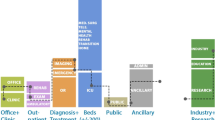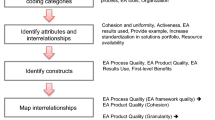Abstract
The paper presents a methodology that follows a top-down approach based on a Model-Driven Architecture for integrating and coordinating healthcare services through cross-organizational processes to enable organizations providing high quality healthcare services and continuous process improvements. The methodology provides a modeling language that enables organizations conceptualizing an integration agreement, and identifying and designing cross-organizational process models. These models are used for the automatic generation of: the private view of processes each organization should perform to fulfill its role in cross-organizational processes, and Colored Petri Net specifications to implement these processes. A multi-agent system platform provides agents able to interpret Colored Petri-Nets to enable the communication between the Healthcare Information Systems for executing the cross-organizational processes. Clinical documents are defined using the HL7 Clinical Document Architecture. This methodology guarantees that important requirements for healthcare services integration and coordination are fulfilled: interoperability between heterogeneous Healthcare Information Systems; ability to cope with changes in cross-organizational processes; guarantee of alignment between the integrated healthcare service solution defined at the organizational level and the solution defined at technological level; and the distributed execution of cross-organizational processes keeping the organizations autonomy.












Similar content being viewed by others
References
Villarreal, P. D., Salomone, E., and Chiotti, O., Modeling and specifications of collaborative business processes using a MDA approach and a UML profile. Enterprise Modeling and Computing with UML, P. Rittgen, Ed. USA: Idea Group Inc., pp. 13–44, 2007.
Roser, S., and Bauer, B., A Categorization of Collaborative Business Process Modeling Techniques. Proceedings of the 7th IEEE International Conference on E-Commerce Technology Workshops, pp. 43–54, 2005.
Müller, M. L., Uckert, F., Burkle, T., and Prokosh, H.-U., Cross-institutional data exchange using the clinical document architecture (CDA). Int. J. Med. Inform. 74(2–4):245–256, 2005.
Neumann, C. P., and Lenz, R., α -Flow: A Document-Based Approach to Inter-institutional Process Support in Healthcare. Business Process Management Workshops. LNBIP Springer Berlin/Heidelberg, Ulm, Germany, pp. 569–580, 2010.
Maglogiannis, I., Delakouridis, C., and Kazatzopoulos, L., Enabling collaborative medical diagnosis over the Internet via peer-to-peer distribution of electronic health records. J. Med. Syst. 30(2):107–116, 2006.
Raghupathi, W., and Umar, A., Exploring a model-driven architecture (MDA) approach to health care information systems development. Int. J. Med. Inform. 77(5):305–314, 2008.
Selic, B., The Pragmatics of Model-Driven Development. IEEE Softw. 20(5):19–25, 2003.
Health Level Seven, Inc., HL7 V3 Guide. HL7 Version 3 Interoperability Standards, Normative Edition, 2006.
Health Level Seven, Inc., HL7 Implementation Guide for CDA R2, Care Record Summary R2, Discharge Summary (U.S. Realm) Draft Standard for Trial Use, Levels 1, 2 and 3, 2009.
Villarreal, P. D., Lazarte, I., Roa, J., and Chiotti, O., A modeling approach for collaborative business processes based on the UPColBPIP language. Business Process Management. LNBIP Springer Berlin/Heidelberg, Ulm, Germany, pp. 318–329, 2010.
Roa, J., Chiotti, O., and Villarreal, P. D., A verification method for collaborative business processes. Business Process Management Workshops. LNBIP Springer Berlin/Heidelberg, Clermont-Ferrand, France, pp. 293–305, 2012.
OMG., Business Process Modeling Notation V2.0, OMG Available Specificacion. Object Management Group, Available at: http://www.omg.org/spec/BPMN/2.0/PDF, 2011. Accessed on September 9, 2011.
Lazarte, I.M., Villarreal, P.D., Chiotti, O., Thom, L.M., and Iochpe, C., An MDA-based Method for Designing Integration Process Models in B2B Collaborations. Proceedings of the 13th International Conference on Enterprise Information Systems (ICEIS 2011), Beijin, China, pp. 55–65, 2011.
World Wide Web Consortium (W3C), Extensible Markup Language (XML) 1.1 (Second Edition) W3C Recommendation 16 August 2006, edited in place 29 September 2006, Available at: http://www.w3.org/TR/2006/REC-xml11-20060816. Accessed on October 24, 2010.
Dijkman, R. M., Dumas, M., and Ouyang, C., Semantics and analysis of business process models in BPMN. Inf. Softw. Technol. 50(12):1281–1294, 2008.
Eclipse. Eclipse Platform, Available at: http://www.eclipse.org. Accessed on August 24, 2011.
Isern, D., Sanchez, D., and Moreno, A., Agents applied in health care: A review. Int. J. Med. Inform. 79(3):145–166, 2010.
Tello-Leal, E., Chiotti, O., and Villarreal, P.D., Agents for Managing Business-to-Business Interactions. 3rd International Conference on Agents and Artificial Intelligence (ICAART 2011), Volume 2 - Agents, Roma, Italy, pp. 238–244, 2011.
Bellifemine, F., Caire, G., and Greenwood, D., Developing multi-agent systems with JADE. Wiley, England, 2007.
Nowostawski, M., JFern—Java-based Petri Net framework, 2003.
FIPA, FIPA Agent Communication specifications deal with Agent Communication Language (ACL), 2002, Available at: http://www.fipa.org/repository/aclspecs.html. Accessed on August 26, 2011.
Schabetsberger, T., Ammenwerth, E., Andreatta, S., Gratl, G., Haux, R., Lechleitner, G., Schindelwig, K., Stark, C., Vogl, R., Wilhelmy, I., and Wozak, F., From a paper-based transmission of discharge summaries to electronic communication in health care regions. Int. J. Med. Inform. 75(3–4):209–215, 2006.
Bal, R., Mastboom, F., Spiers, H. P., and Rutten, H., The product and process of referral: Optimizing general practitioner-medical specialist interaction through information technology. Int. J. Med. Inform. 76(1):S28–S34, 2007.
Conflict of interest
The authors (Edgar Tello-Leal, Omar Chiotti, and Pablo D. Villarreal) of the manuscript “Process-oriented Integration and Coordination of Healthcare Services across Organizational Boundaries”, we declare no conflicts of interest, and we did not hope to receive at any time a payment or services from a third party for any aspect of the submitted work, including but no limited to grants, data monitoring board, study design, manuscript preparation, statistical analysis, employment, consultancies, stock ownership, honoraria, paid expert testimony, patent applications and travel grants.
Author information
Authors and Affiliations
Corresponding author
Rights and permissions
About this article
Cite this article
Tello-Leal, E., Chiotti, O. & Villarreal, P.D. Process-Oriented Integration and Coordination of Healthcare Services across Organizational Boundaries. J Med Syst 36, 3713–3724 (2012). https://doi.org/10.1007/s10916-012-9844-0
Received:
Accepted:
Published:
Issue Date:
DOI: https://doi.org/10.1007/s10916-012-9844-0




